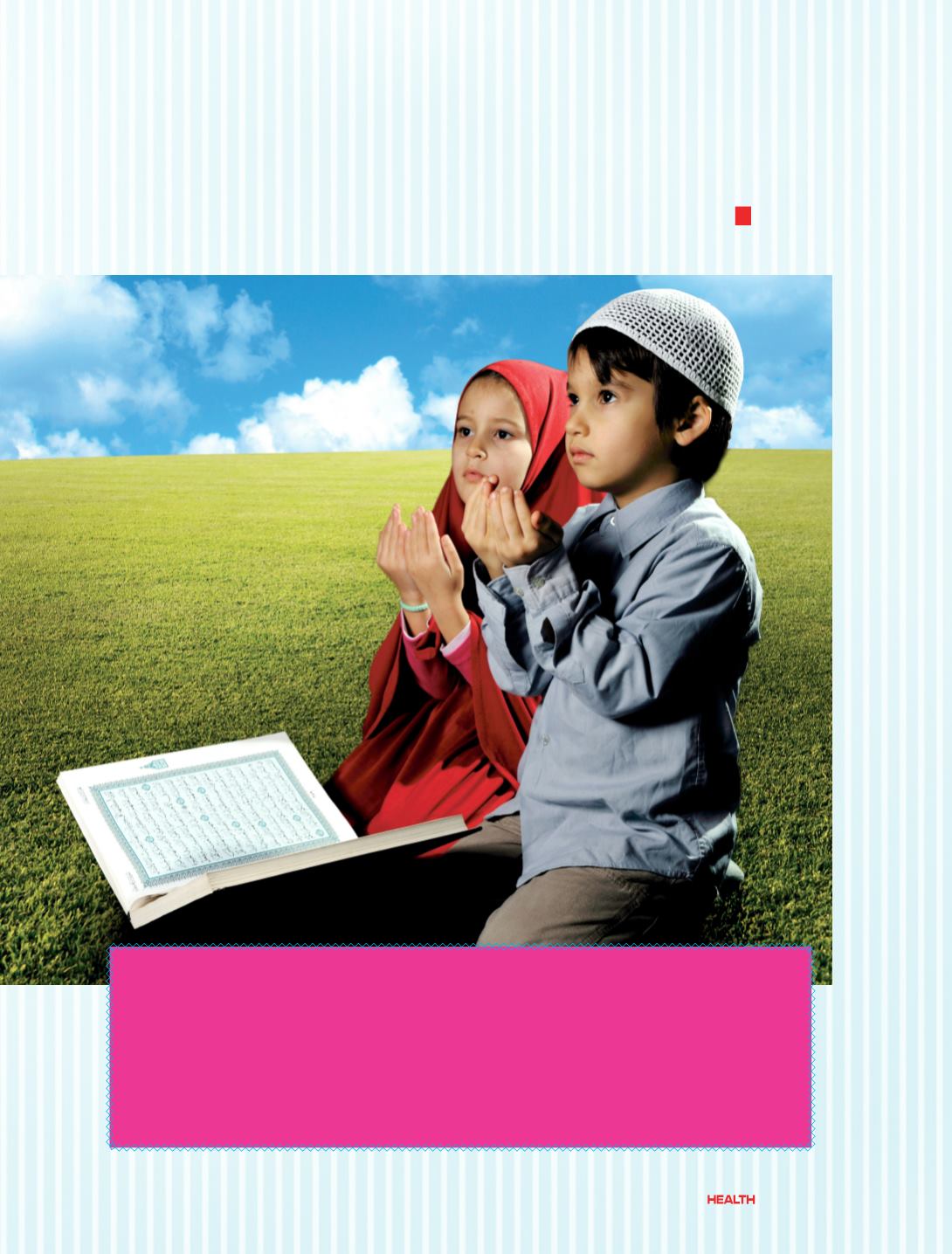

it can cultivate negative traits like
hypocrisy, lying, cowardice and
deceit.” Positive reinforcement, she
advises, works wonders and can
make it much easier to get them to
fast. “Praise and encouragement are
strongly recommended,” she says,
adding, “The gradual approach is to
be used when introducing children
to fasting.” Do not expect a small
child to fast a full day from the
onset. “Increase the duration of the
child’s fast in increments, according
to the child’s age and ability,” she
says. “Having a religious and
celebratory air at home is also
helpful since the child can sense
the importance of this month by
making it different and special
from the other months of the year,”
she suggests, and even if they are
not fasting, children can cease
eating and drinking a few hours
before sunset and sit down to Iftar
with their families.
What to Eat
When it comes to balanced food, Ranganath says that the principles of good nutrition hold true for
those who are fasting. “Children can be encouraged to have a healthy diet and this is easily attained if
one is choosing foods from each of the food groups namely the grain group, fruit and vegetable group
as well as the meat and dairy group,” she says. “Children should be encouraged to stay away from foods
containing too much sugar/fats/ salts and caffeine such as cola.” For school going children, special
emphasis should be placed on calcium intake. Getting children to drink milkshakes or yogurt-based
smoothies is an excellent way to boost calcium intake. School children also need plenty of iron for
making blood and lean muscle.
H
71
May/June 2015















